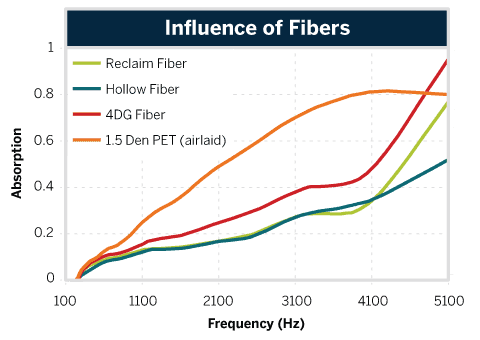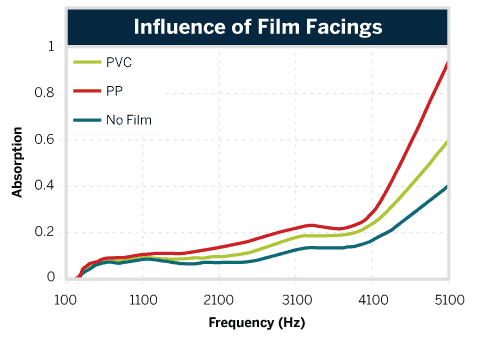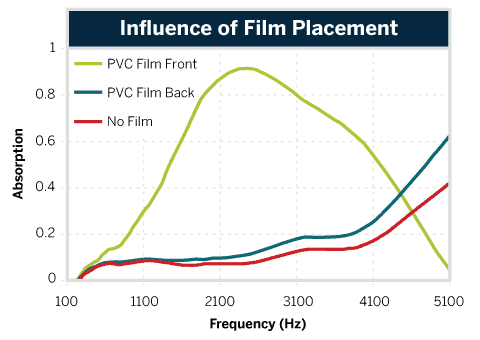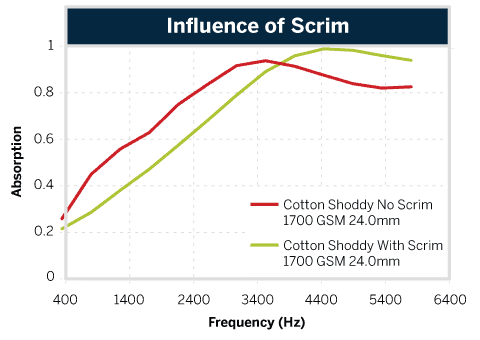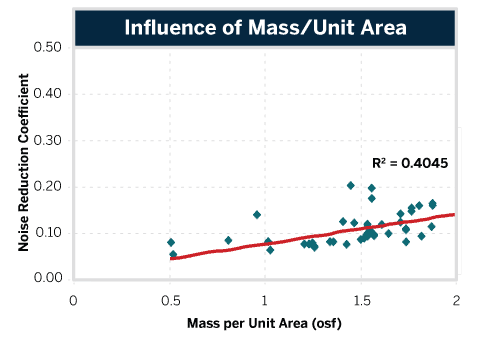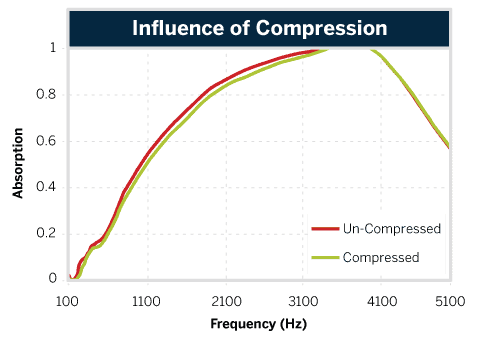RubberMill provides targeted noise reduction for your unique application. In order to create the best noise dampening technology on the market, we perform extensive research and testing into the factors that influence noise reduction.
Noise Reduction Factors
Fiber

Fiber size and cross-section play important roles in acoustical performance. Smaller fibers absorb more sound by allowing more fibers per volume, more contact area and more torturous channels.
Film Facings

Films provide desirable protective and aesthetic properties. They are highly reflective to sound waves and therefore have a dramatic influence on sound absorptive properties of nonwoven fiber materials. Type of film material, thickness and bonding methods can affect performance and should be tested to ensure desired results.
Film Placement

Film at the back of the sample generally performs better than no film because it reflects the sound waves back into the fibers allowing for additional absorption. Film at the front of the sample may reflect sound waves and prevent absorption.
Scrim

Adding scrim in an application intended to absorb lower frequencies may decrease absorption and increase the cost of the material.
All Charts’ Source: Acoustical Absorptive Properties of Nonwovens Study | 2005 | NC State University School of Textiles

